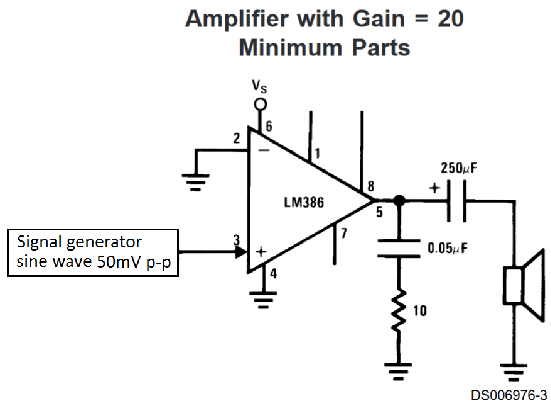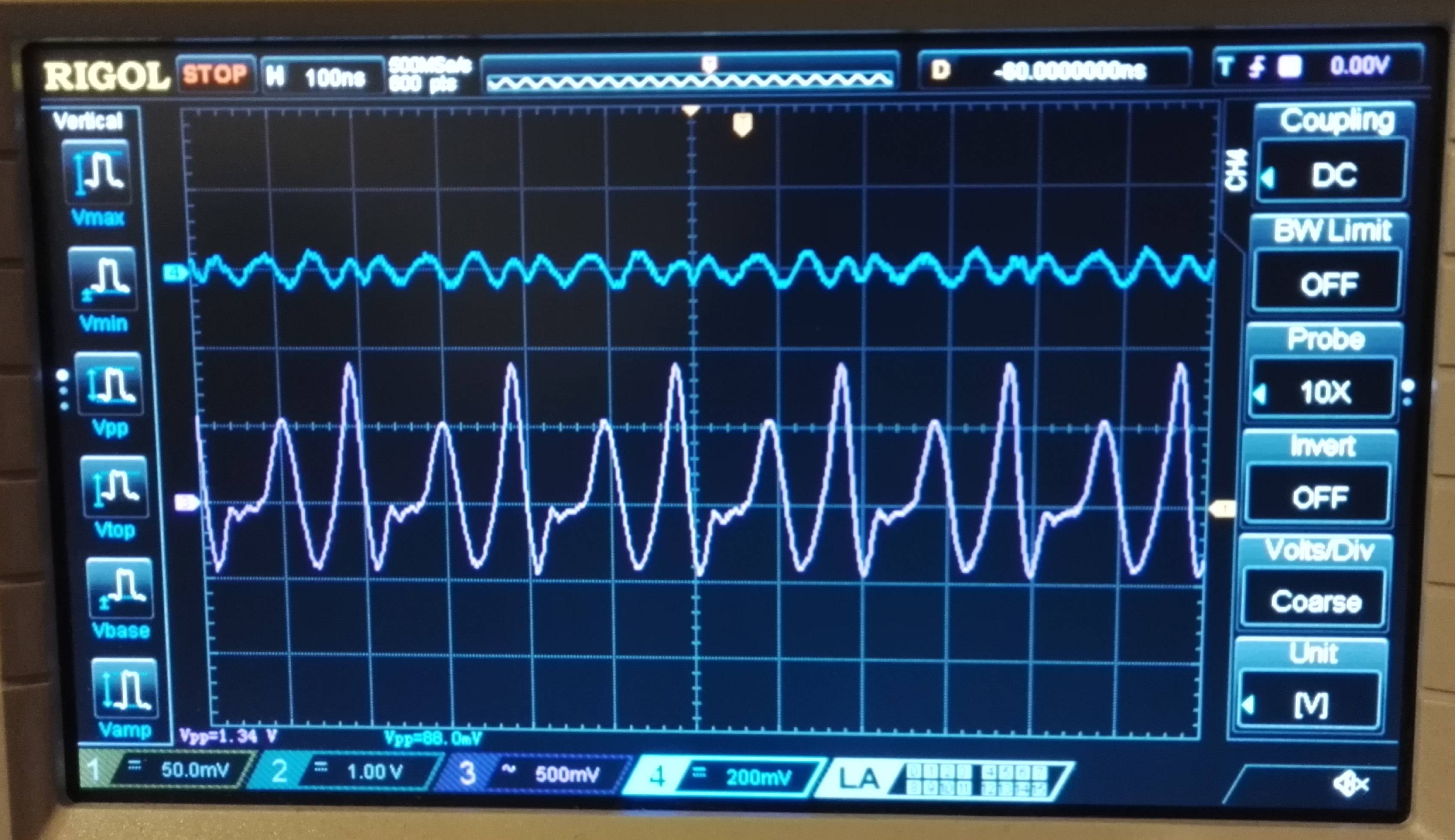I recently made a circuit to test out LM386 audio amplifier for the first time on solderless board. I relied on the datasheet circuit shown below:
First I connected a 7.5ohm resistor at the output instead of a speaker. I get a clean sine wave at the output. The upper wave is the input while the lower wave is the output.
However, when I replace it with this speaker,
the output (and input) seems to become corrupted. Here is the scopeshot:
(1) Why could this be happening?
Besides this I am trying to figure out a few more things.
(2) Why do we have the output connected to ground via a 0.05uF capacitor and a 10ohm resistor in most schematics in the datasheet? What purpose does this serve since this is clearly not a filter.
(3) This is clearly a single supply amplifier topology. However, even if I provide it with a 100mV p-p signal, the negative cycle still shows at the output. How come???
(4) Why is output always capacatively coupled to a speaker? Is it because the DC signal may overheat the speaker?
(5) The bypass pin is used to prevent signal degradation as per the data? It says this pin may grounded or a capacitor used. How do I know which one I should do?
Finally, I made another interesting observation. Initially the output was completely corrupted, it was looking like this:
Then I realized that oh there is noise on the supply rails. When I added a 0.1uF capacitor, the noise went away and the amplifier output became a sine wave (when driving a 7.5ohm resistor). The noise looks like this:
I used AC coupling to be able to look at the noise. (6) Why does the supply noise above cause the amplifier to completely fail? Somehow without the smoothing capacitor, both input and output become corrupted.






